[Habra-offtopic] Maratona di Roma, or the first marathon for an IT specialist
In Rome on April 8, 2018, I ran my first marathon (time - 4: 29.41). We have a very sports company (see the report on the IT championship in the Hero Race), but many friends and colleagues who congratulated me had absolutely no idea what a marathon was and how to interpret my result.
Our dialogue was approximately the following (D - friend, I - I):
For me, these questions even seemed wild at first, because I’ve already plunged into running subjects. Therefore, I decided to write a short report about my first marathon, briefly tell what it is and whether it is difficult to prepare for a marathon for an ordinary IT person.
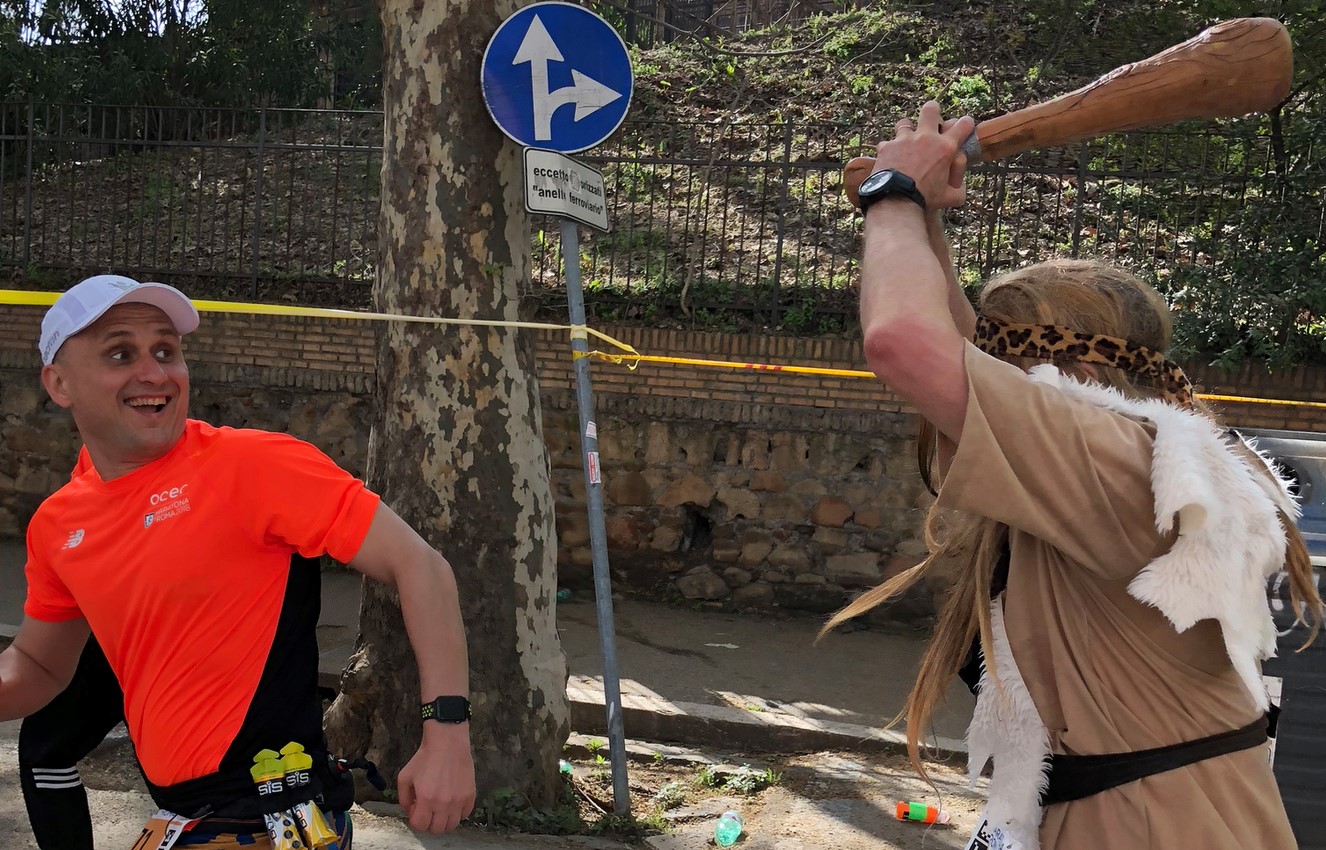
From school, everyone knows a beautiful legend, according to which a Greek warrior named Fidippid in 490 BC. e. after the Battle of Marathon, he ran, not stopping, from the Marathon to Athens, to announce the victory of the Greeks. Having reached Athens, he managed to shout: “Rejoice, Athenians, we have won!” and fell dead.
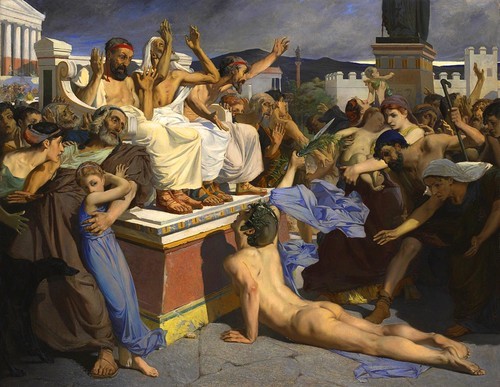 Luke-Olivier Merson "The Soldier of the Marathon." Source
Luke-Olivier Merson "The Soldier of the Marathon." Source
According to this legend, running a marathon is very cool and deadly. I believe that the enthusiastic congratulations of my friends are based on their school knowledge.
However, according to studies of marathon races in the United States from 2000 to 2009, the frequency of such deaths is approximately 0.75 per 100,000 finishers ( source ).
Some comparisons ( source ):
As for me, it is much better to die as Fidippid with a strong bare back under the admiring glances of the Athenians than in some Zhiguli with a beer belly.
The official length of the marathon is 42 km and 195 meters.
However, in practice, participants run a great distance. This happens due to the non-optimal cornering or if the athlete is distracted by running to the “pit stop” or if the participant is distracted by the audience too much - kissing, hugging, clapping his hands, etc. In this regard, experienced athletes control this aspect: they try not to run in the crowd, optimally take tangential turns, etc.
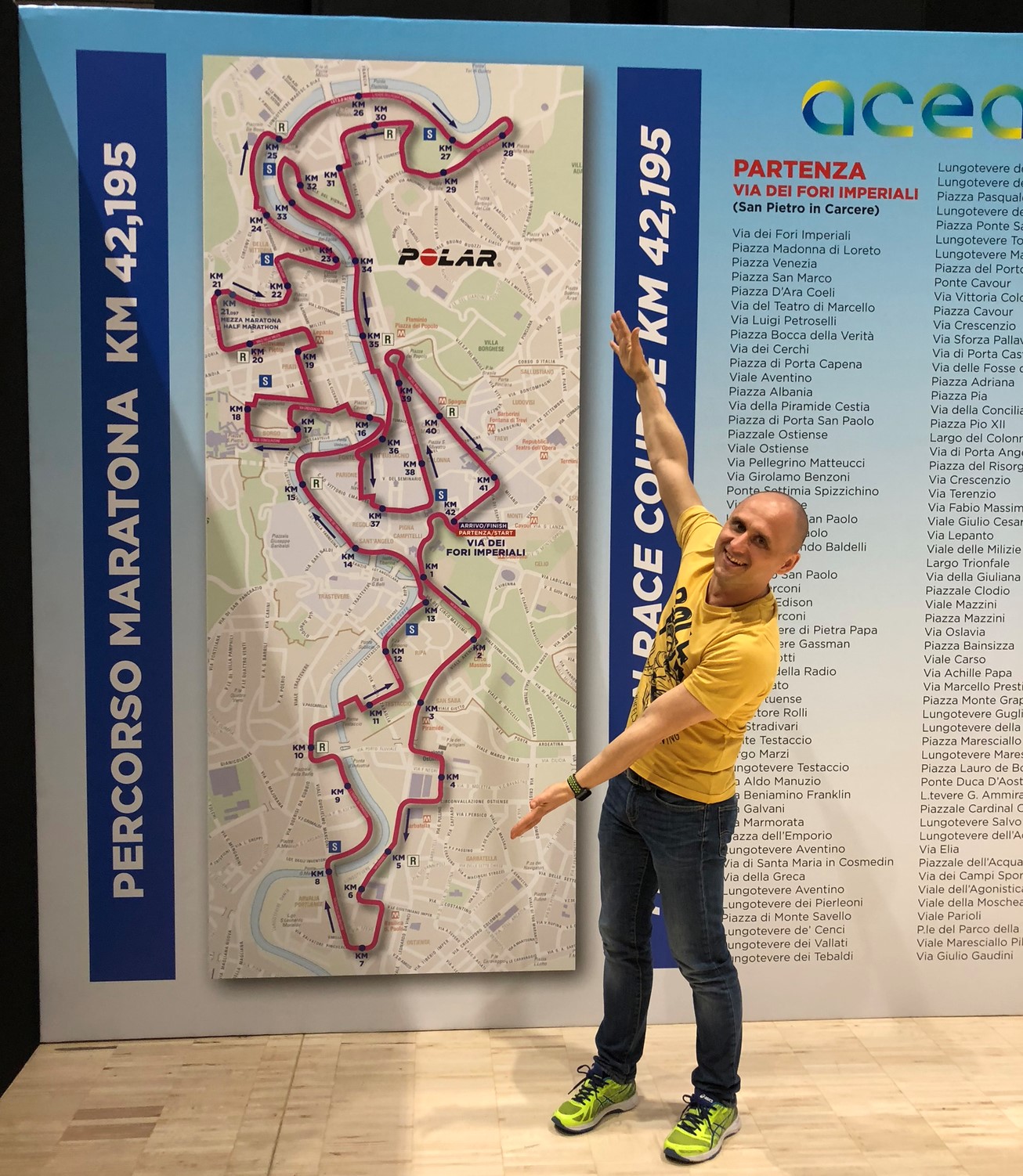 The route of the marathon in Rome
The route of the marathon in Rome
In general, 42 km 195 meters - this is quite a lot on the scale of modern cities. Therefore, the track eventually covers a significant part of the city. A marathon participant can be said to run the entire city (at least its historical part) up and down.
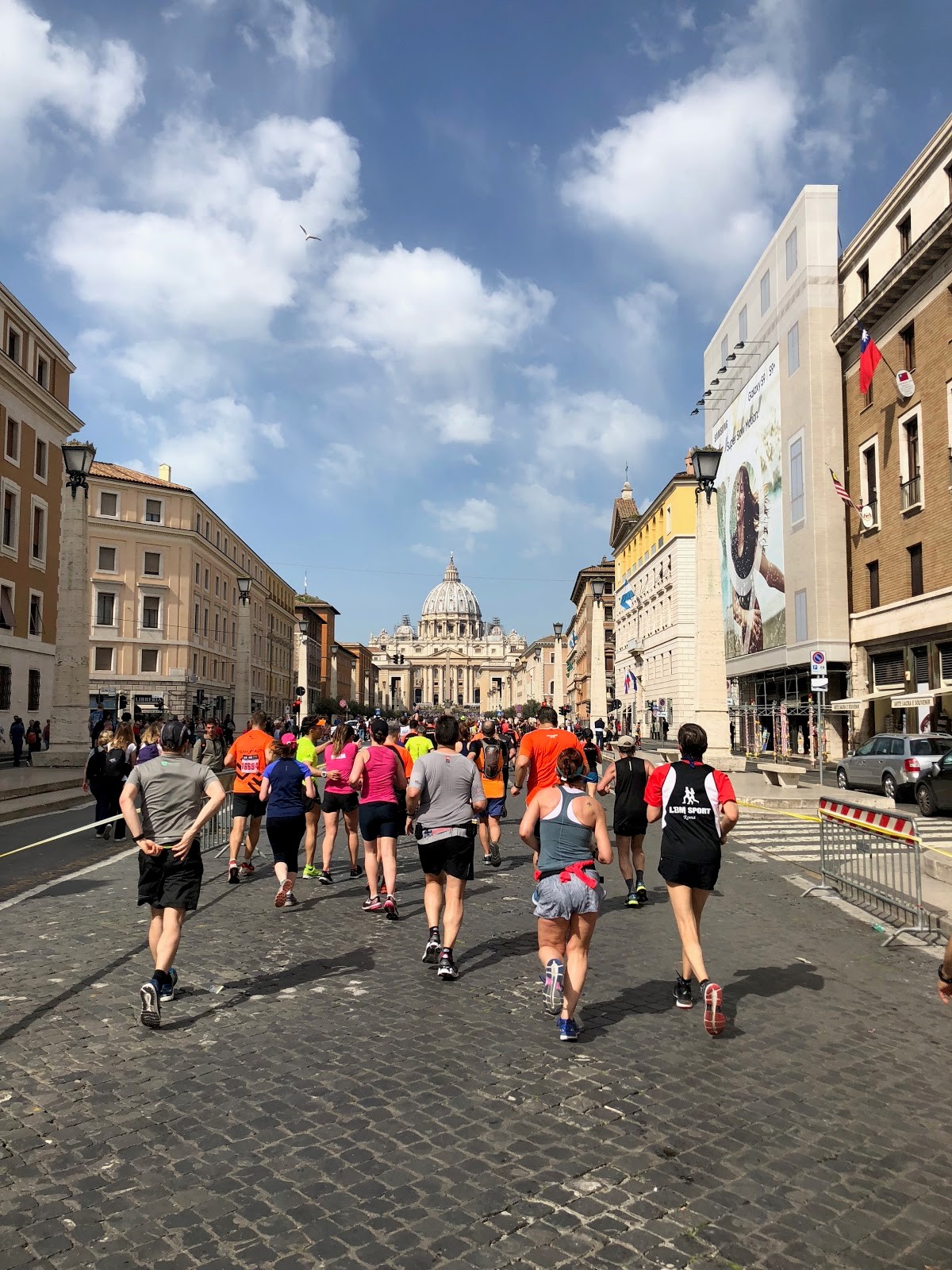 So I run up to St. Peter's Square in the Vatican.
So I run up to St. Peter's Square in the Vatican.
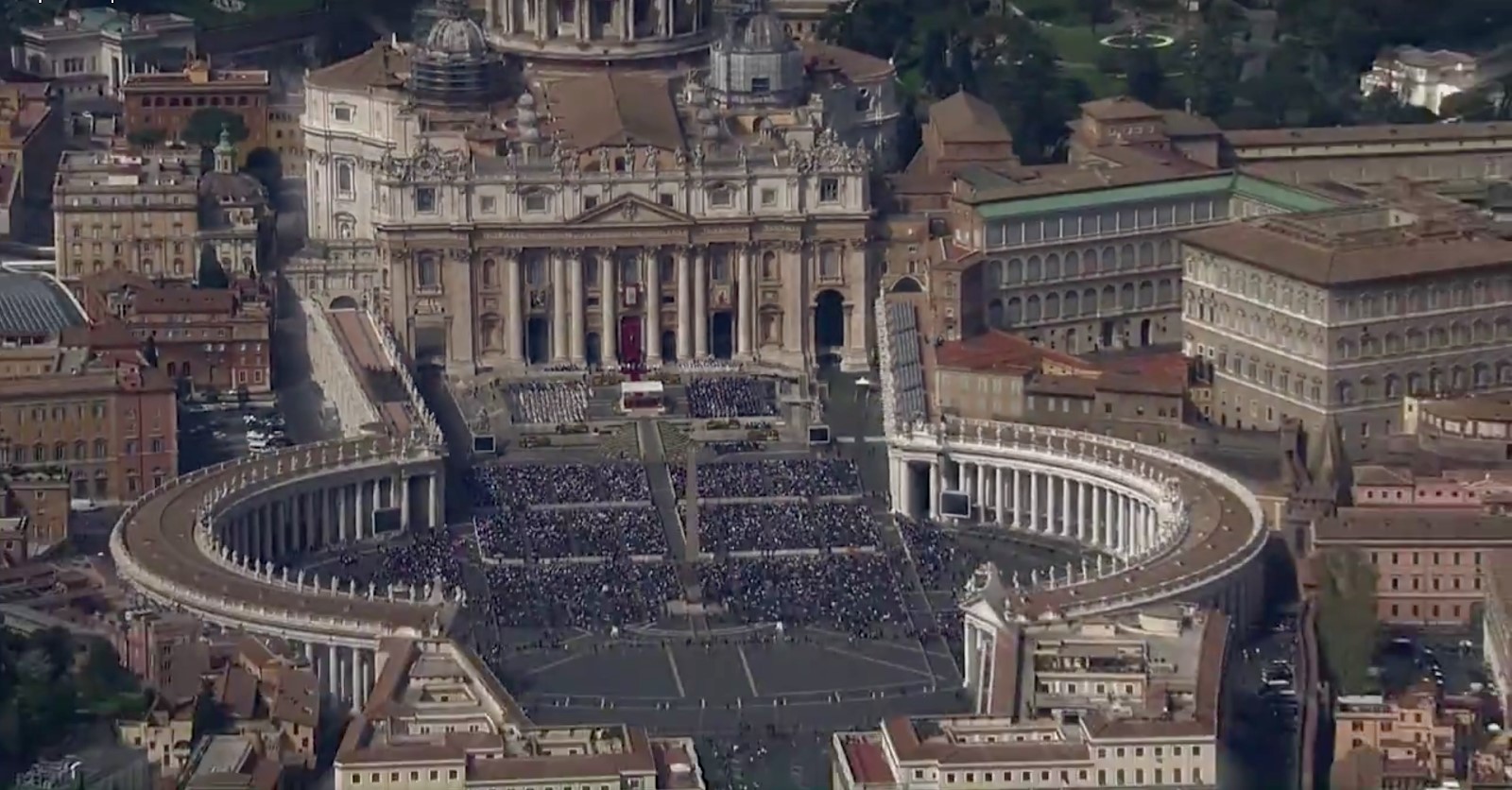 Source
Source
When we ran through the square, it turned out that it was all filled with people and someone read a sermon to them (probably it was a pontiff (now a certain Francis is holding the post of pope)).
 So I run to the Castle of the Holy Angel - a building that has a long history, has witnessed the most important historical events, a place that some popes have chosen as their residence.
So I run to the Castle of the Holy Angel - a building that has a long history, has witnessed the most important historical events, a place that some popes have chosen as their residence.
Pretty ridiculous building for my taste. But, of course, the views that open from its roof are amazing. I took a picture there the day before.
My distance was 42 km and 930 meters, i.e. I ran somewhere else 735 meters, well, or this is a mistake of my watch.
According to Herodotus, in 490 BC everything was a little different:
The training of Fidippida changes everything completely. If you believe Herodotus, then Fidippid is more likely the founder of the triathlon or all-around, and not a marathon.
In general, if short distances can be overcome without special consequences, probably anyone. Well, the time will be worse or better, but you somehow hear your 400 meters, 800 meters, 5 km or even 10 km. For example, I participated in the 10 km race in the Moscow marathon in 2017 without any preparation for the company (the result is 00: 53.35).
Nevertheless, it is better not to run a marathon without preparation. Good news: it turns out that getting ready for a marathon is very fun and not at all difficult. All you need is a pair or two of running shoes, running clothes for summer / winter, a training plan, a sports watch, and a wish. It’s even better to train less or more often with a trainer to correct your running technique. Only 5-6 months of training, and you are a marathon runner!
I already had a watch - Apple Watch Nike +.
It turned out that the training plan is also not a problem at all. Manufacturers of sportswear and equipment have already taken care of everything. There are tons of free or low cost options.
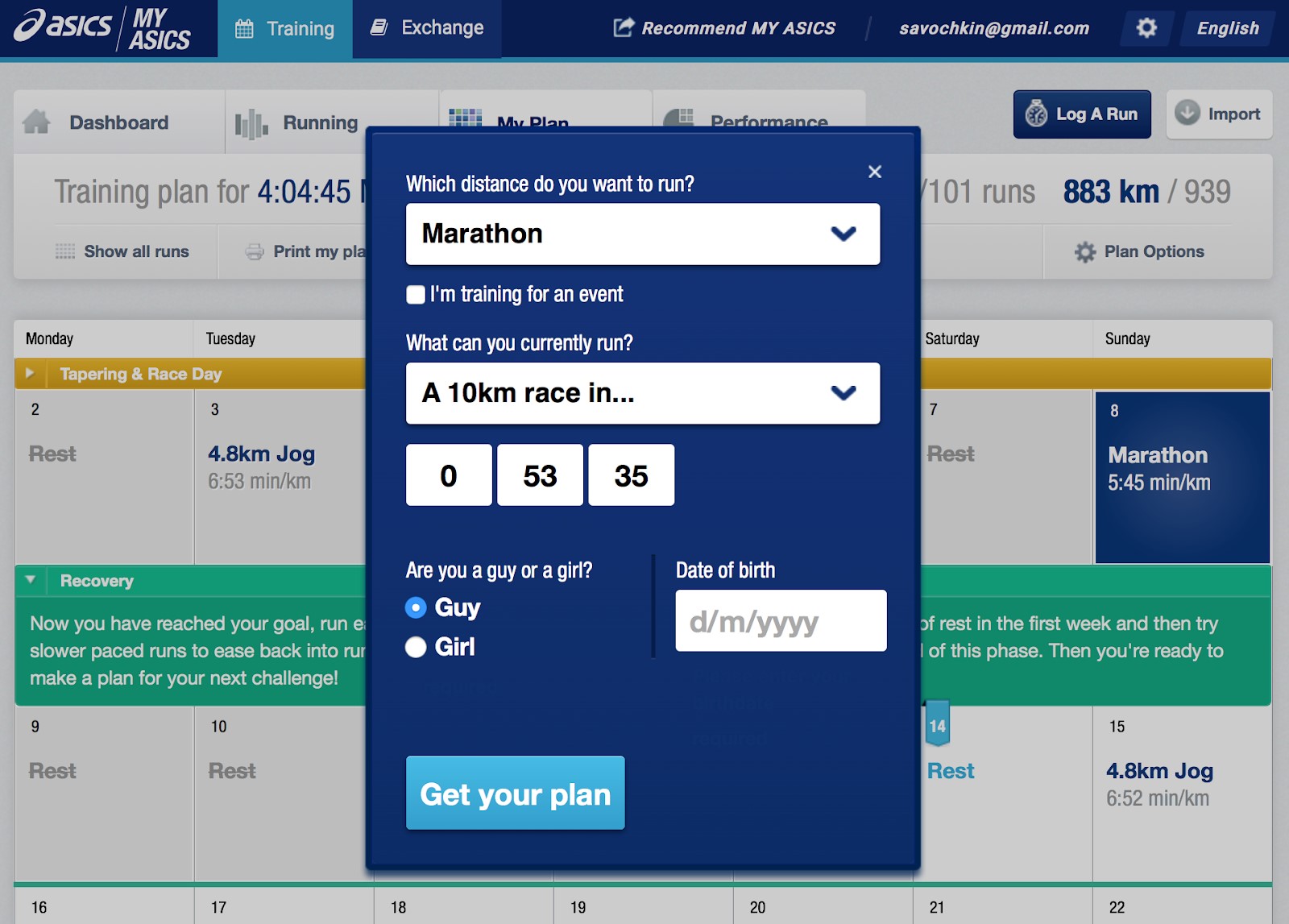
This is how the preparation of the preparation plan through the Asics website looks . You indicate that you want to run a marathon and when, the result of your previous race, gender, date of birth. Then you will also need to indicate how many days a week you can train and that’s all - the system itself will calculate the forecast result and a plan for it. You can do the same through the Runkeeper iOS app and then use it to track your runs.
I used the training plan from NikePlus and their iOS and Apple Watch apps ( Nike + RunClub ). Everything is quite convenient - I see in the application a training plan for every day / week until the race, I record my runs using the Apple Watch application, and they are immediately taken into account in my plan.

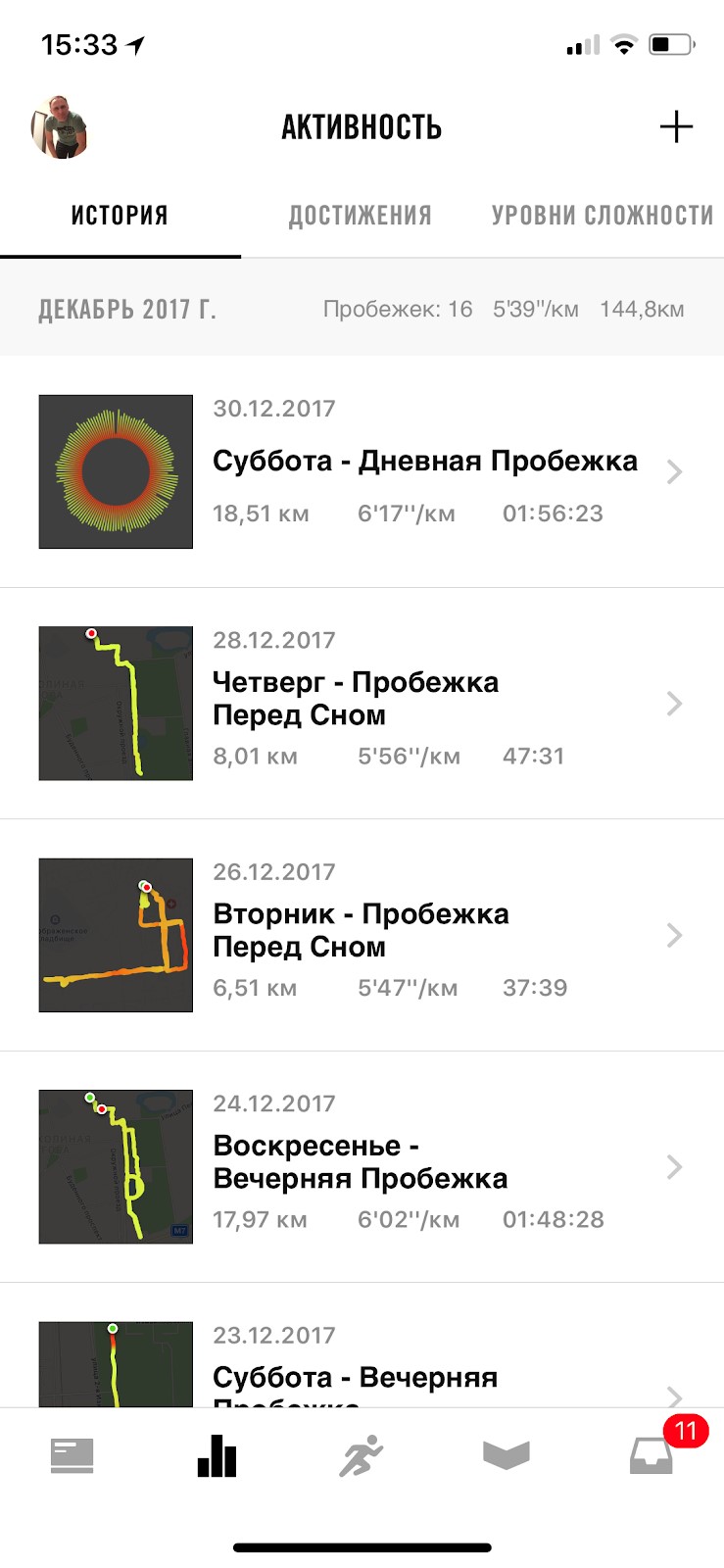
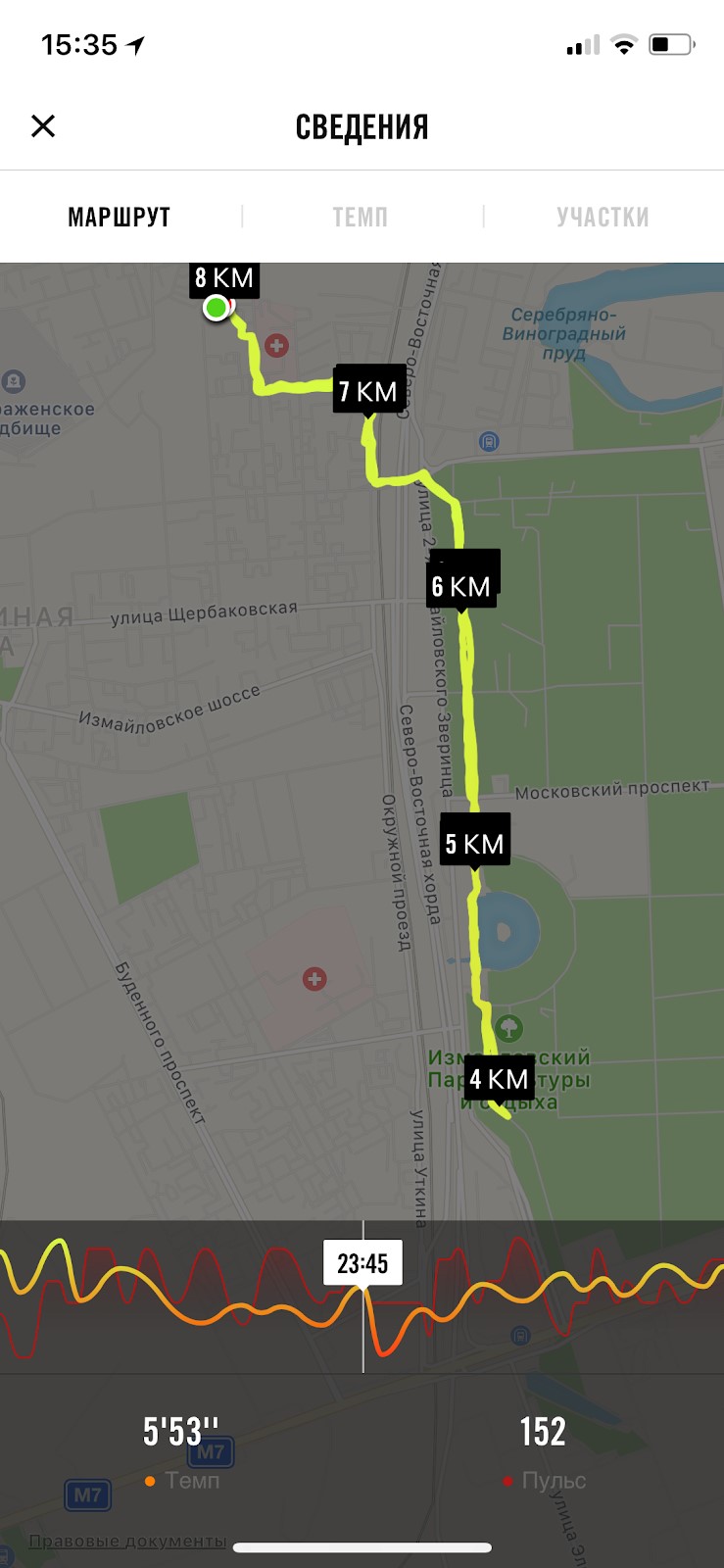
Nike + RunClub iOS Screenshots
The screenshot above shows screenshots of the Nike + RunClub iOS app . It is shown how you can create a new plan - choose a marathon, the day of the upcoming race, enter additional information and the plan is ready. Next, you can see all the planned workouts for every week before the race. Jogging information can be entered manually or tracked through the Apple Watch.
Other options can also be used with the same success - Endomondo , Strava . A subscription costs some money, but it’s not very expensive.
When to find time for training? In fact, it is full! For example, I like to run after work - so I let off steam after a busy day. Run through - thoughts become clear, somehow the tension goes away by itself and even new ideas and solutions to some problematic issues come. If I didn’t run, I would probably just go blank in front of the TV, trying to somehow come to my senses after work.
Some of my friends just started running to and from work. The benefit is in our central office LANITThere is a gym with shower. In the same gym, you can, in the afternoon before lunch, for example, manage to do a workout on a treadmill. Someone prefers to run in the morning before work. In general, a lot of options. Most importantly, it just brings pleasure. And if you like something, then there will certainly be time.
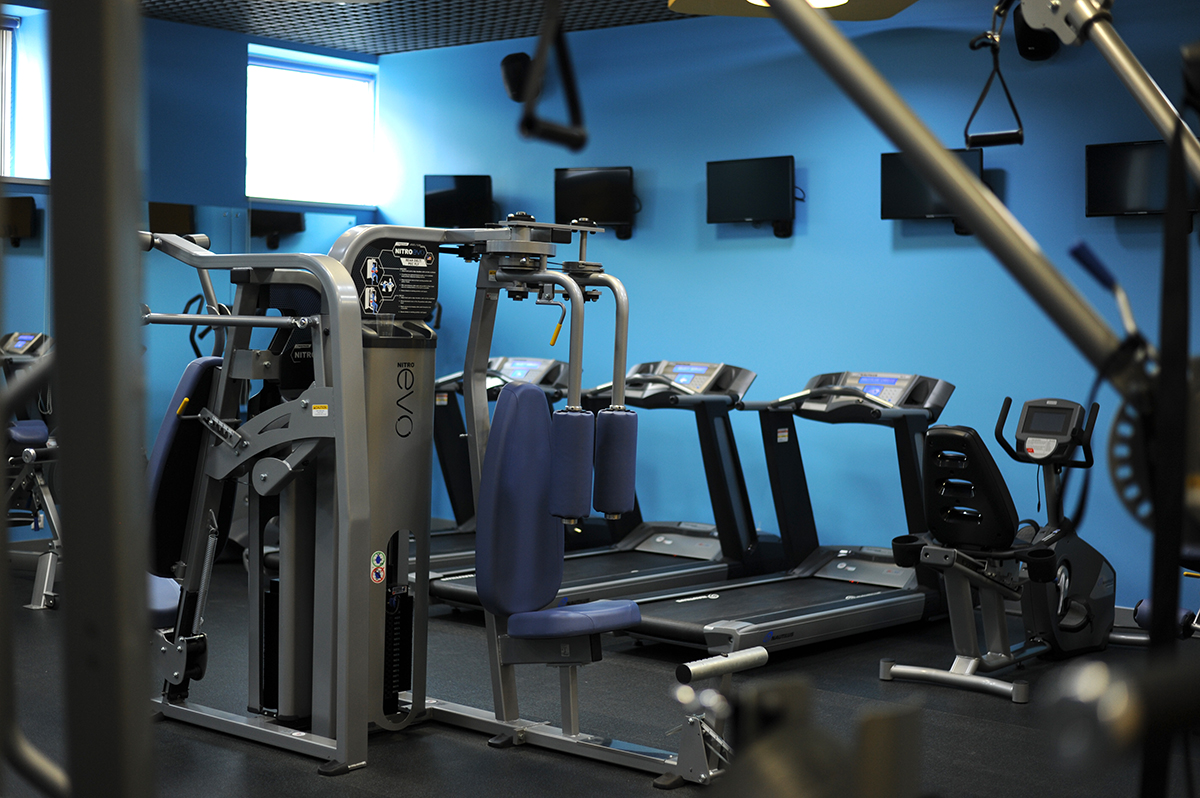
It’s best to train not just like that, but to choose a specific start, register for it and prepare purposefully. In this case, you will clearly understand your goal, and it will spur you on. In addition, you will be spurred on by paid tickets and a hotel, which you may lose if you merge.
“Everyone can run 20 miles, but no one knows what awaits him after this,” wrote Olympic champion 1972 American Frank Shorter. - Carbohydrates give the body about 1200 kcal, in addition, it can produce up to 800 kcal from its own fat reserves. In total - 2000 kcal. And since running an average of 100 kcal per run, the calculation is simple: energy is only 20 miles. Then they run on the character. ”
That is why they say that the marathon begins after the 30th kilometer, and among athletes there is such a thing as a “Wall”, i.e. when there is an irresistible desire to stop, to leave the race, fatigue falls, etc. In order to delay or reduce this effect, athletes try to increase muscle glycogen stores before the race. Simply put, they eat pasta and similar dishes the day before. Before triathlon races and long races, a special event is very popular - pasta party. In Rome, there was no such event, apparently, since without it everyone eats solid pasta every day.
We can assume that Fidippid did not have the opportunity in wartime conditions to carry out a full carbohydrate loading on a pasta party. Even worse, if during the race he had limited opportunities to drink and eat. I can imagine what “Wall” he experienced!
During the marathon, the body strains and specifically responds to food. What you can normally eat normally, you will not get into the throat after the 20th kilometer. Therefore, nutrition also needs to be trained. It is recommended to think over your nutrition plan for the marathon in advance and train it during long runs.
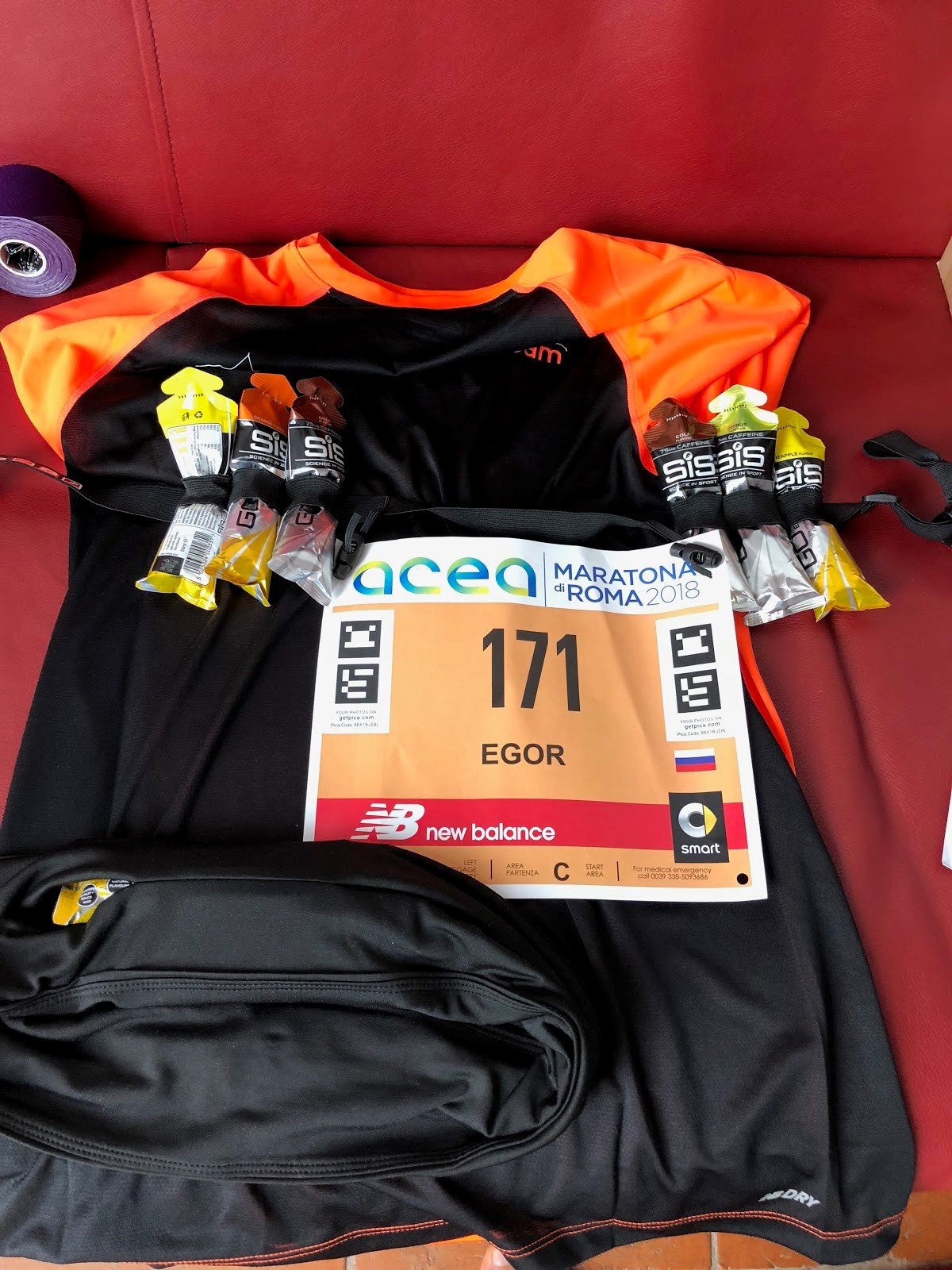
My nutrition plan was as follows:
During marathons, food outlets are organized. In Rome, food outlets were every 5 km - there were given bananas, apples, oranges, cookies, water, PowerAid. Maybe there was something else from the food, but since I was carrying everything with me, I did not particularly pay attention to the menu.
Expo is an event that precedes the marathon, where participants receive their numbers with chips, etc., as well as a bunch of stands from manufacturers of sportswear and equipment, sports nutrition, representatives of other marathons, charitable organizations, etc.
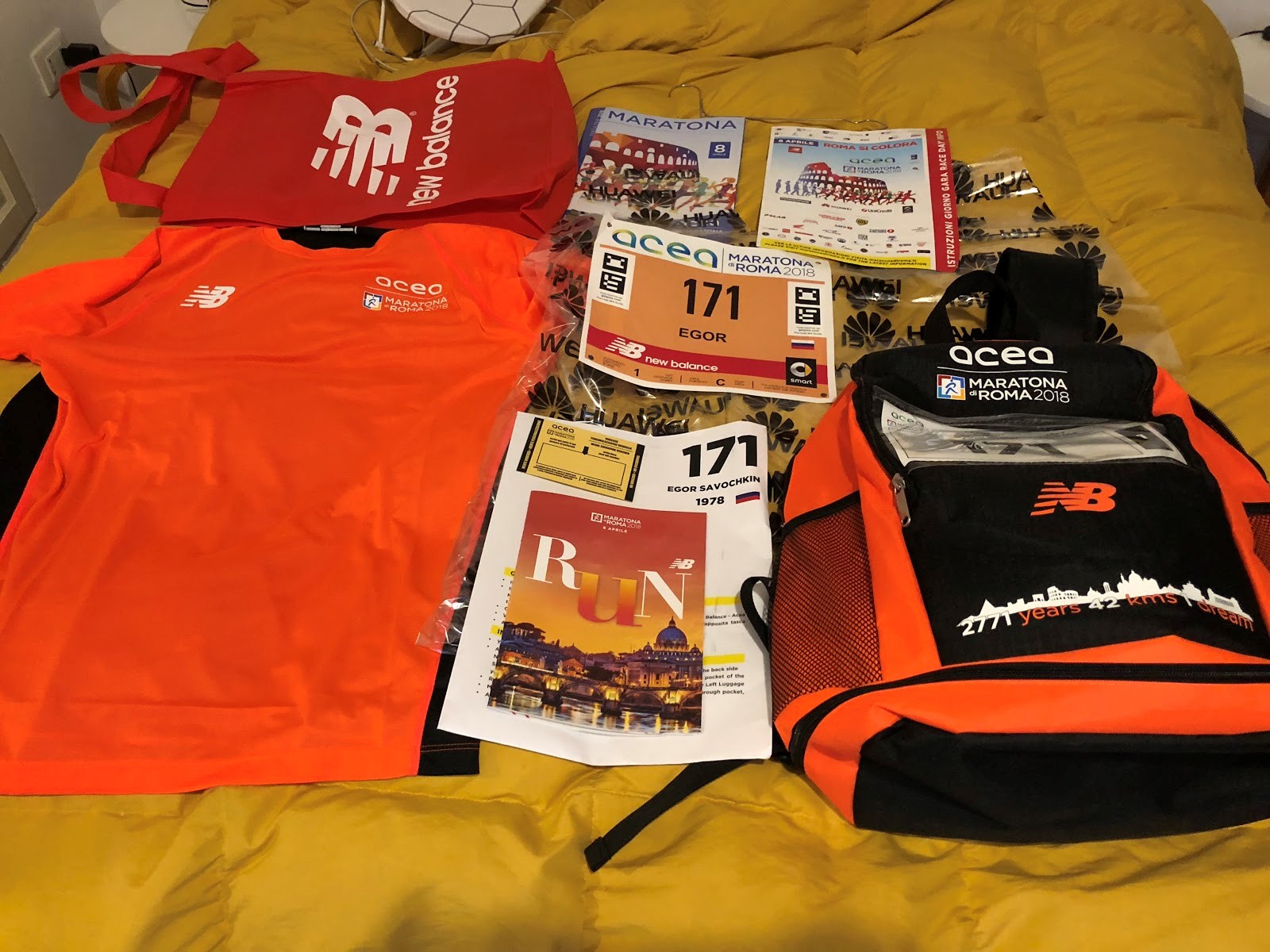
At the Expo, I was given an envelope with a number with a chip, a participant’s instructions, confirmation that I paid for the engraving of the medal, a backpack, a bag, a T-shirt, a bunch of promotional materials.
The number of participants in the marathon can be tens of thousands of athletes. A start area is organized where you can put things in storage, where all athletes gather in start groups (or waves) depending on their results.
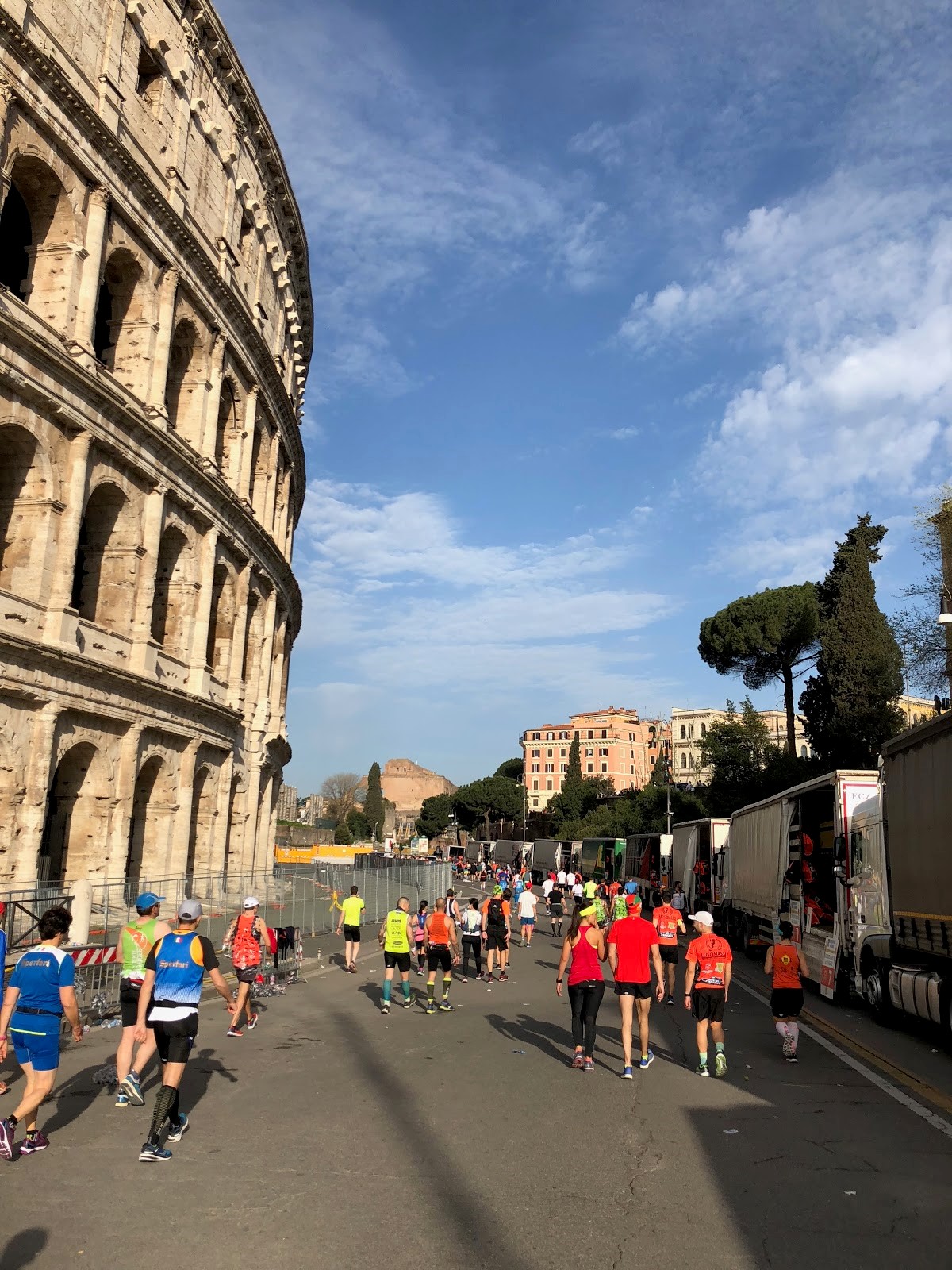 The entrance to the starting area is at the Coliseum . There are trucks for storing backpacks and many toilets. We lived near the start / finish, so we didn’t deposit anything.
The entrance to the starting area is at the Coliseum . There are trucks for storing backpacks and many toilets. We lived near the start / finish, so we didn’t deposit anything.
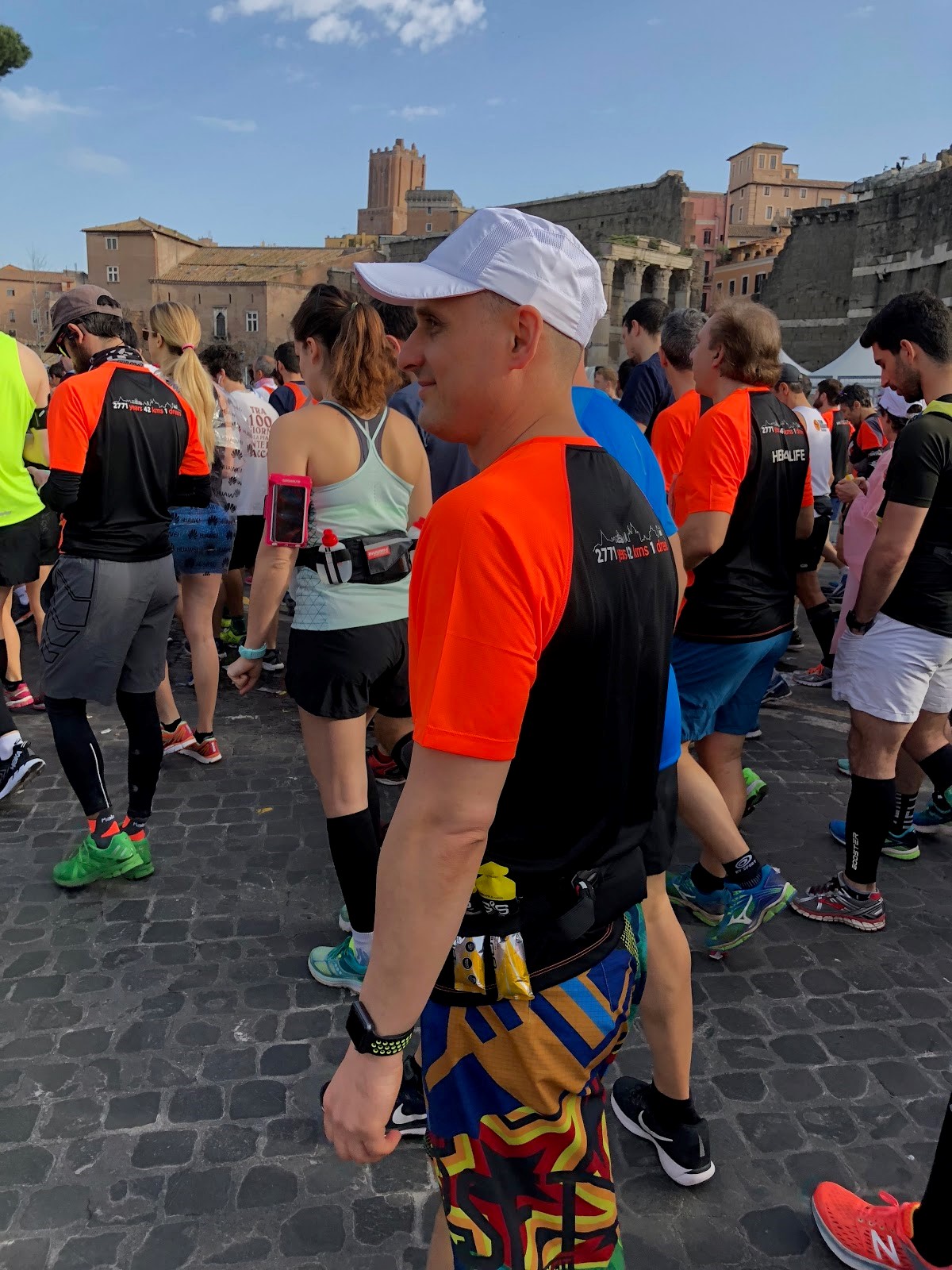 All quietly getting to the start along Via dei Fori Imperiali street near the Imperial Forums. The elite starts first, then athletes with fast time, then with average time, and then everyone else.
All quietly getting to the start along Via dei Fori Imperiali street near the Imperial Forums. The elite starts first, then athletes with fast time, then with average time, and then everyone else.
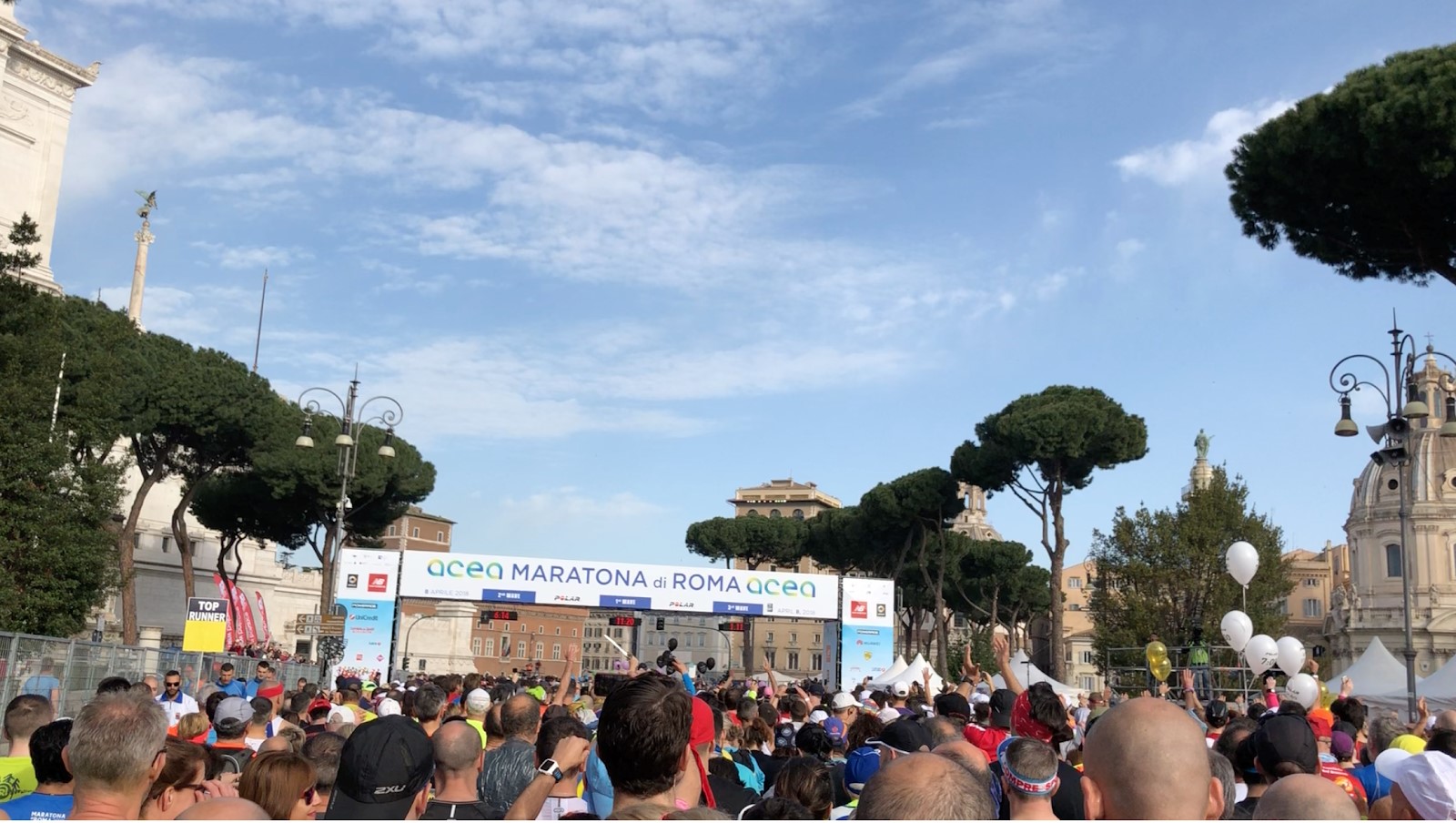 We start at Capitol Hill . Behind was the Colosseum .
We start at Capitol Hill . Behind was the Colosseum .
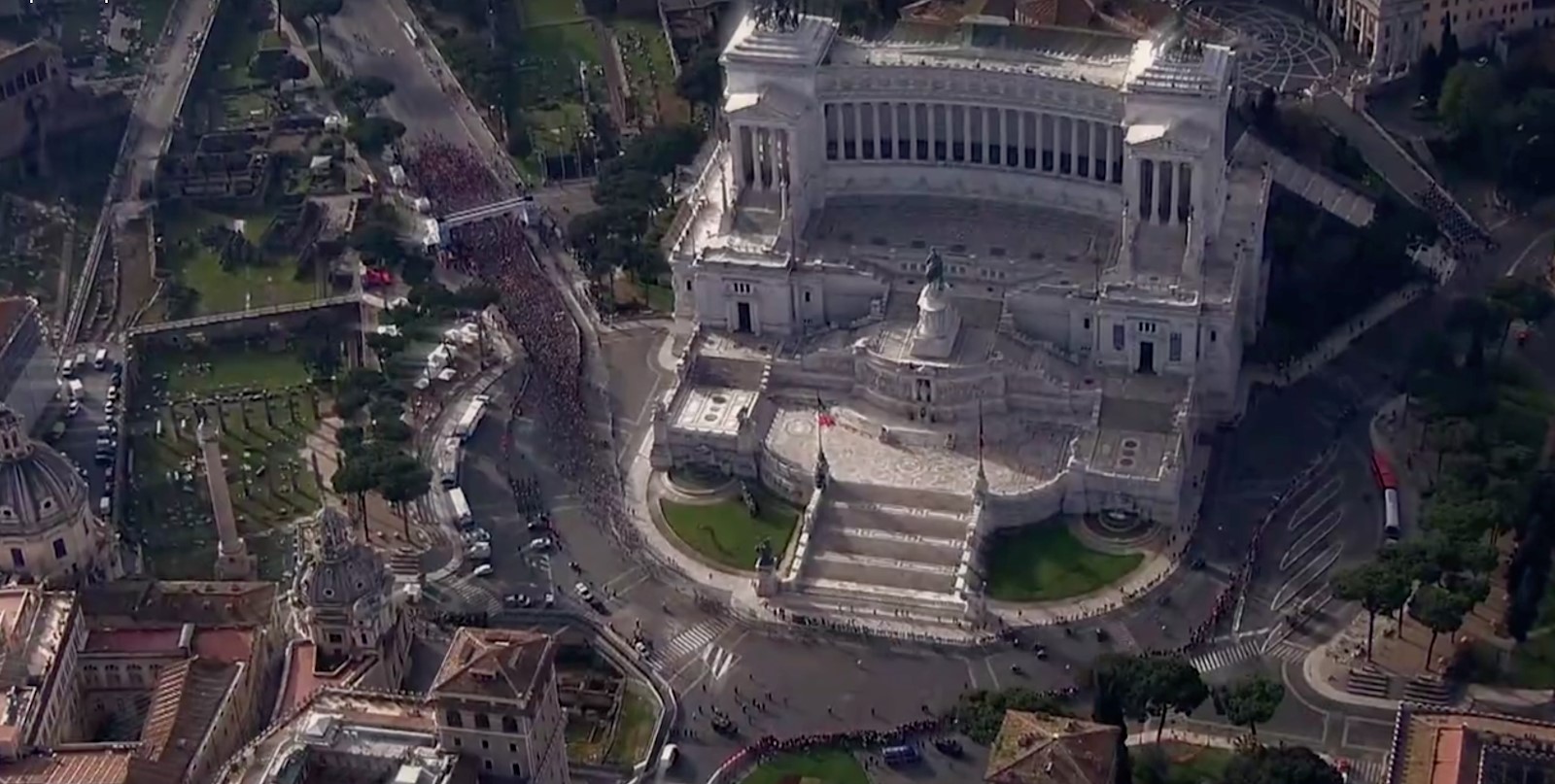 The countdown is carried out individually for each athlete, begins at the moment of passing through the starting frame and ending at the moment of passing the finish frame (with the exception of the elite - for them start by signal).
The countdown is carried out individually for each athlete, begins at the moment of passing through the starting frame and ending at the moment of passing the finish frame (with the exception of the elite - for them start by signal).
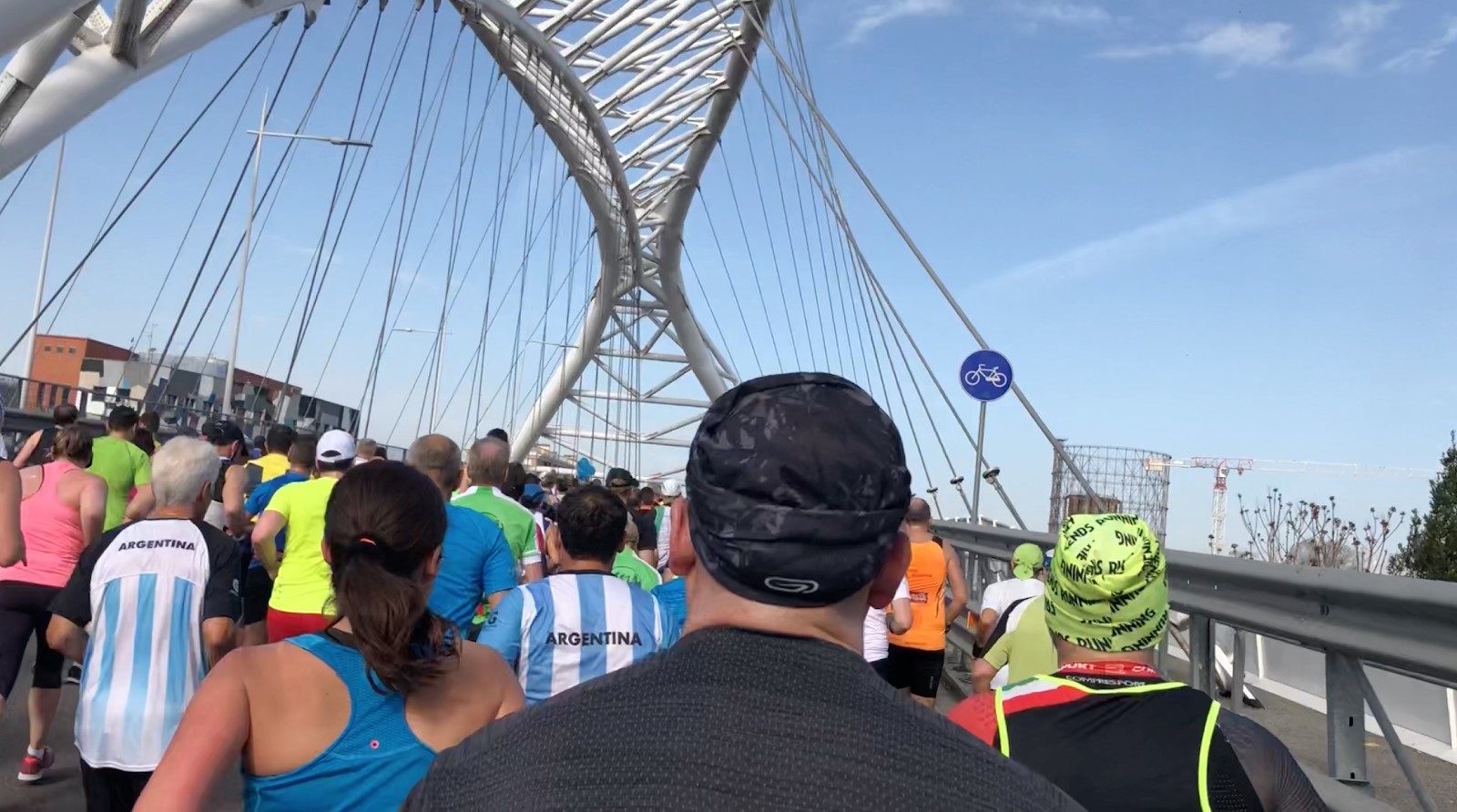 The first 5-10 kilometers are quite a dense crowd.
The first 5-10 kilometers are quite a dense crowd.
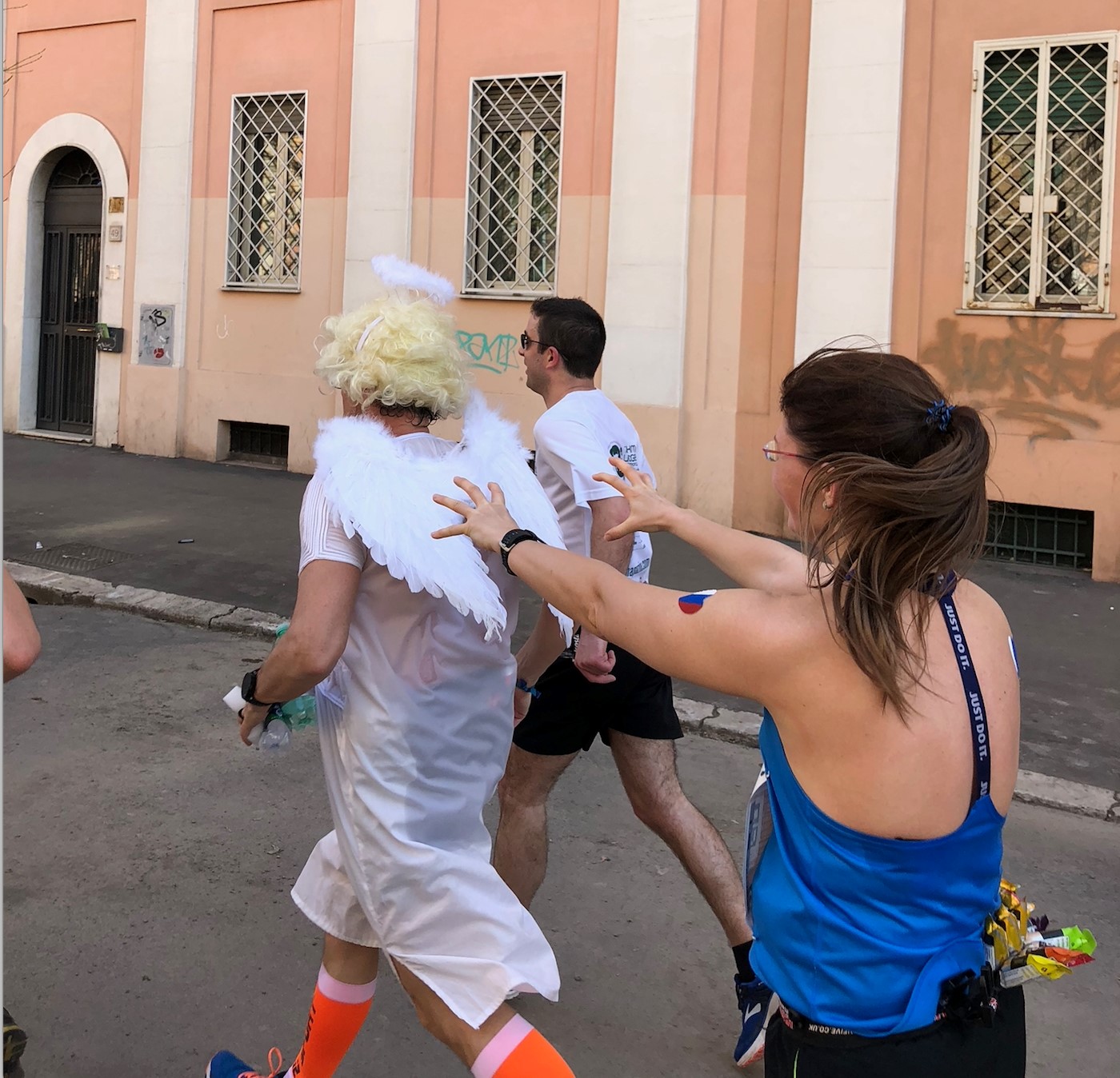 Running a marathon is no longer fun for anyone. Therefore, they go into all serious ... What did this man want to say with his costume?
Running a marathon is no longer fun for anyone. Therefore, they go into all serious ... What did this man want to say with his costume?
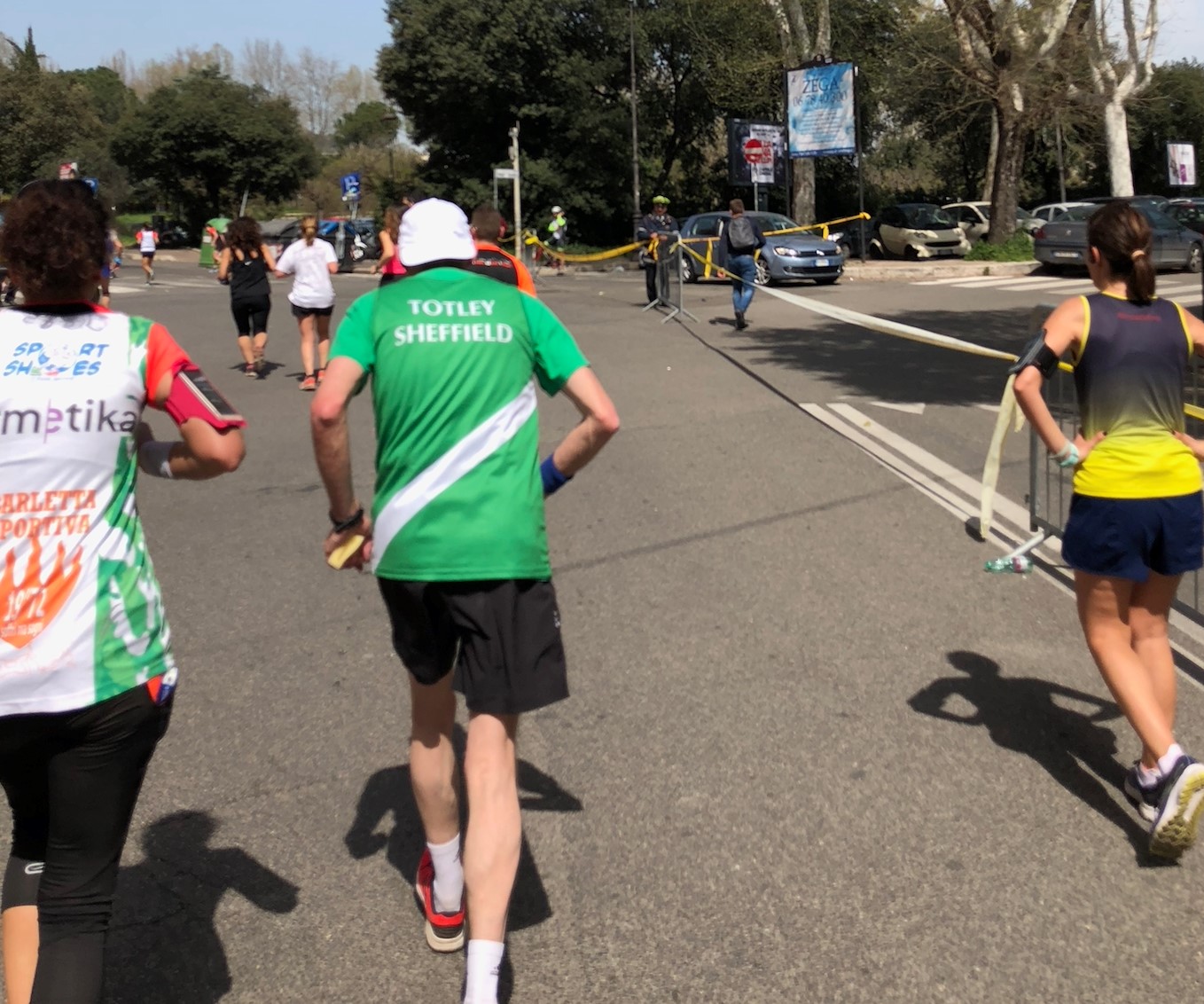 I don’t know when this grandfather ran out, but I probably overtook him at the 23rd kilometer!
I don’t know when this grandfather ran out, but I probably overtook him at the 23rd kilometer!
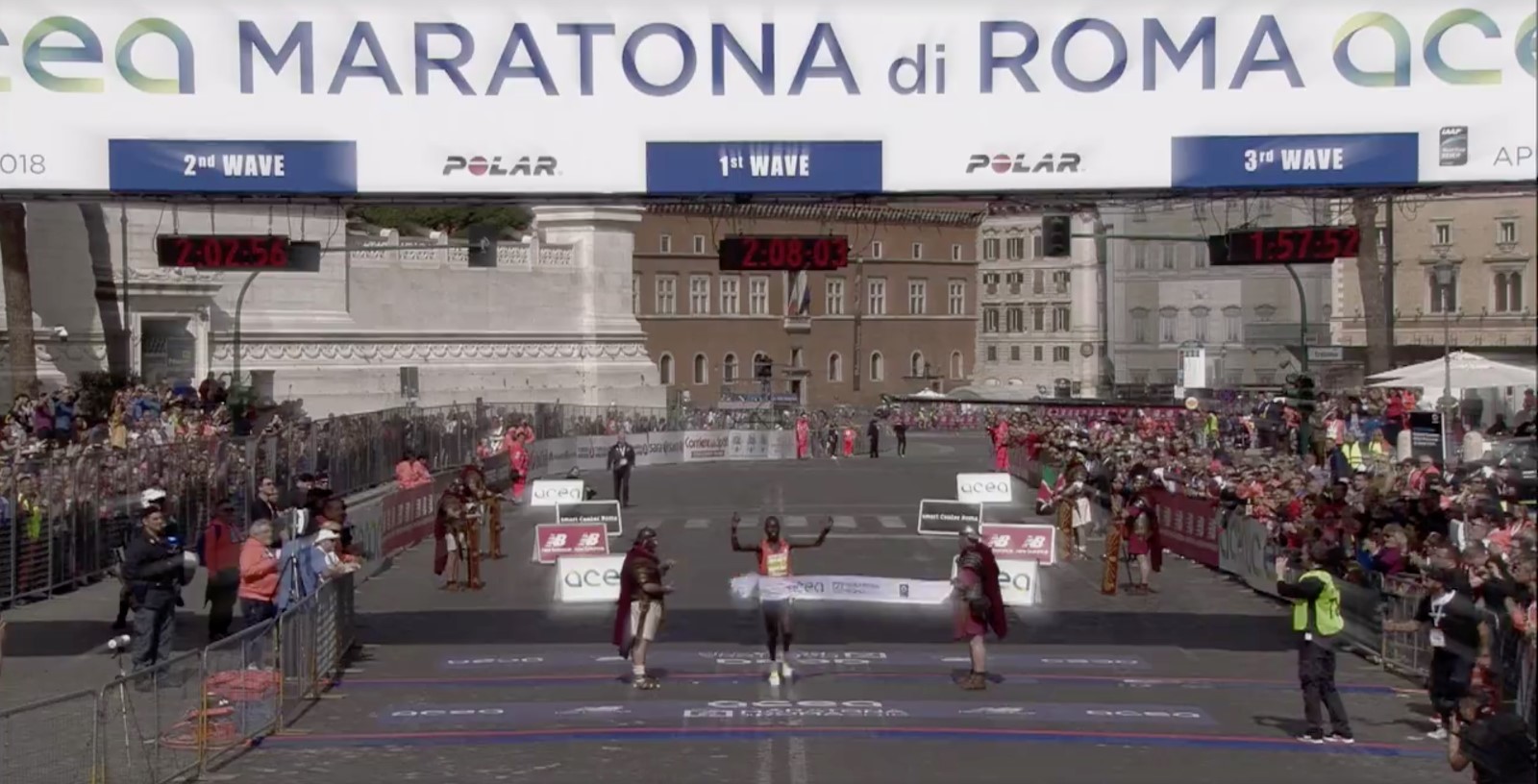 Source . Legionnaires met at the finish.
Source . Legionnaires met at the finish.
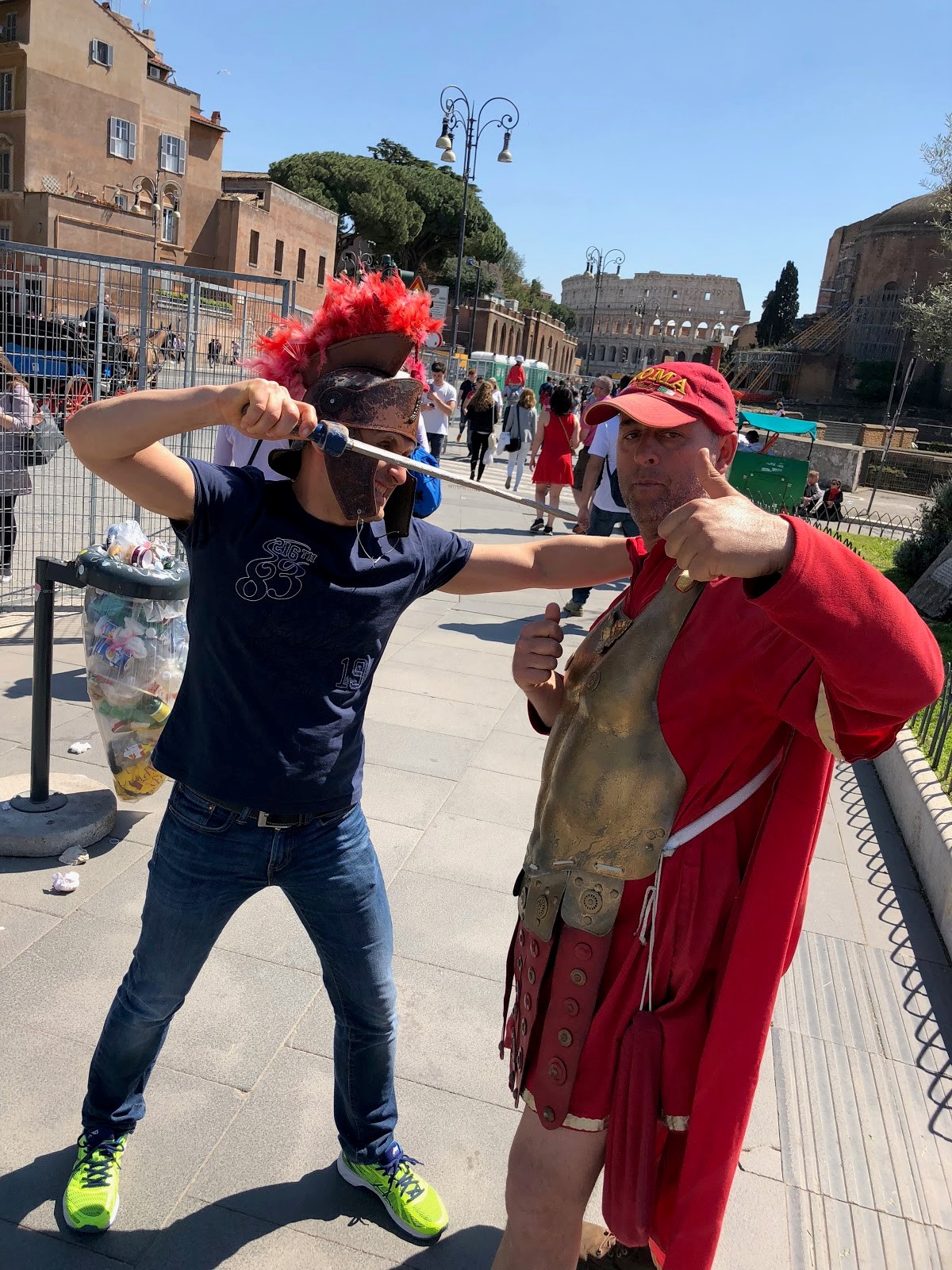 ... one of which I tried to disable on the eve of the race at about the same place. How tired of all the tourists!
... one of which I tried to disable on the eve of the race at about the same place. How tired of all the tourists!
Elite athletes overcome the marathon in 2 hours and a few minutes. The record for men was set by Dennis Kimmeto in Berlin on September 28, 2014 - 2: 02.57. For women, the record was set by Paula Radcliffe on April 13, 2003 in London - 2: 15.25.
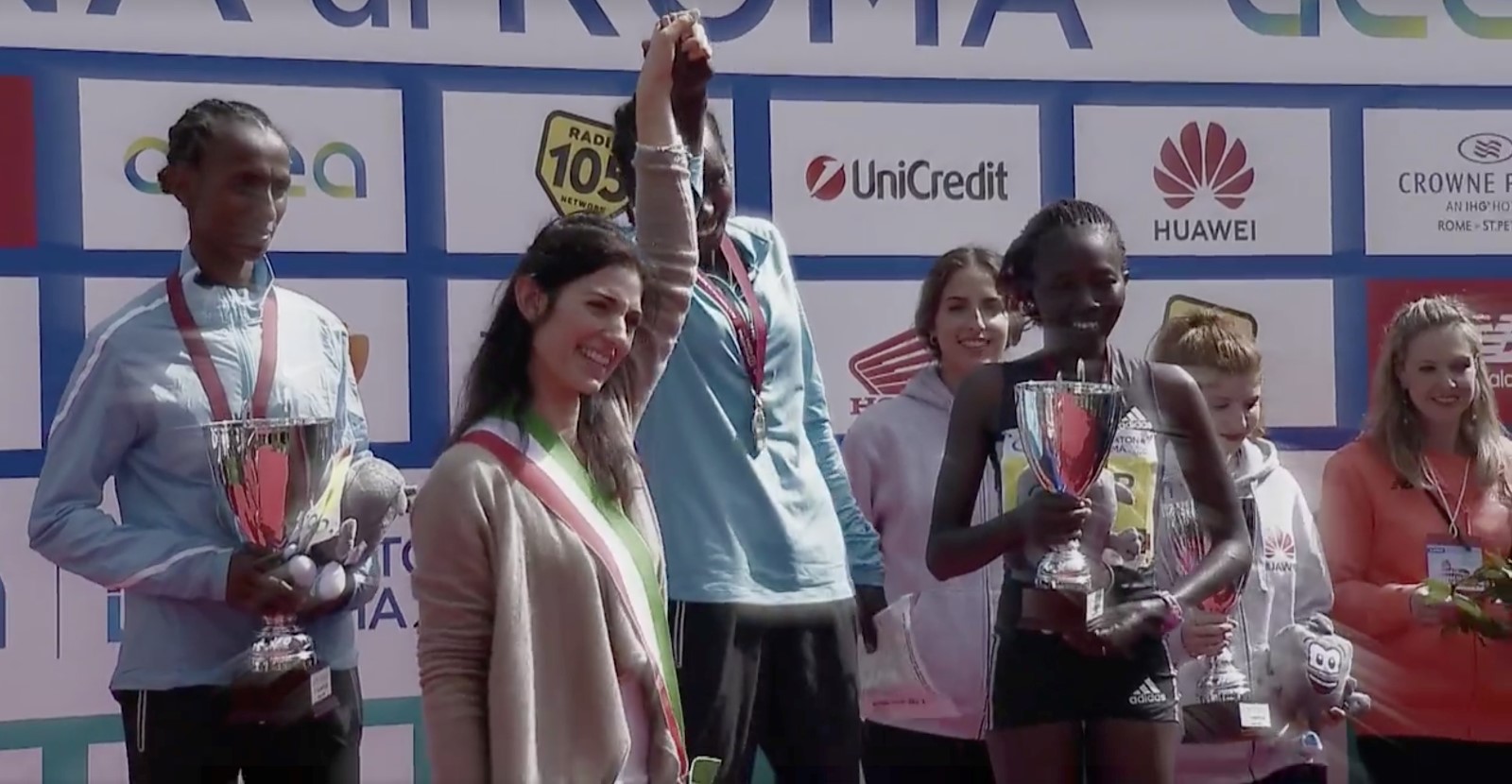 Source
Source
In Rome in 2018:
All finishers are given a cool medal.
From the marathon in Rome there were simply wonderful impressions - a cool video .
Running a marathon is not deadly at all. Of course, a couple of days you will go down the stairs sooo very elegant. But if you were preparing for the marathon, eating right before and during the time, correctly spread out in the distance (you didn’t immediately rush at full steam), went to the sauna and massage after the race, after 3-4 days you will feel like a new motorcycle!
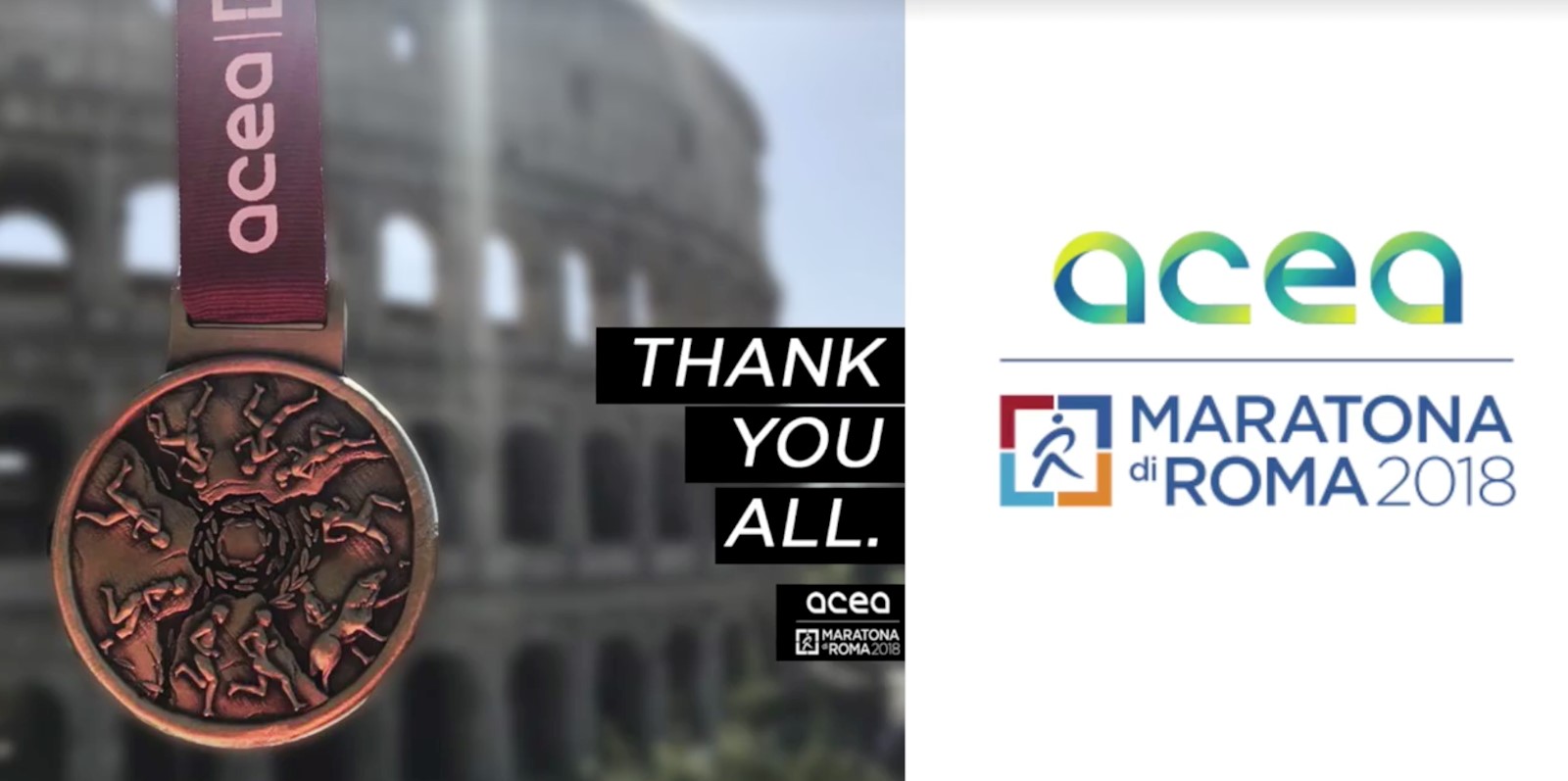 Source
Source
For preparation, depending on your level, it will take several months minimum and more, it took me 5.5 months, every week 4 trainings. Small investments in sportswear are required - sneakers, clothes for summer and winter. Perhaps the results of your first marathon will not be so impressive? but the buzz you get from this is huge.
Marathons are held in the leading capitals of the world, you can combine business with pleasure. The distance of the marathon is such that you will run with your feet up and down almost the entire city, at least its historical part.
Finding time for training is very simple. Running is very fascinating in itself and allows you to unload the brain after work (or vice versa, charge in the morning). Of course, there are hard training or moments when you do not want to train. But the inexorably approaching launch date, paid tickets and the hotel create additional motivation!
Finally, running is just great and healthy!
Our dialogue was approximately the following (D - friend, I - I):
(D): Well, handsome! Did you run something there, they say?
(I): Thank you, yes, the marathon.
(D): Well, don’t get smart, tell me how much you ran?
(I): 42 km 195 meters, of course, at 4:30.
(D): Nevermind ran 42 km in 4:30! Yes you are just a megamonster!
For me, these questions even seemed wild at first, because I’ve already plunged into running subjects. Therefore, I decided to write a short report about my first marathon, briefly tell what it is and whether it is difficult to prepare for a marathon for an ordinary IT person.

Deadly version
From school, everyone knows a beautiful legend, according to which a Greek warrior named Fidippid in 490 BC. e. after the Battle of Marathon, he ran, not stopping, from the Marathon to Athens, to announce the victory of the Greeks. Having reached Athens, he managed to shout: “Rejoice, Athenians, we have won!” and fell dead.

According to this legend, running a marathon is very cool and deadly. I believe that the enthusiastic congratulations of my friends are based on their school knowledge.
However, according to studies of marathon races in the United States from 2000 to 2009, the frequency of such deaths is approximately 0.75 per 100,000 finishers ( source ).
Some comparisons ( source ):
- the probability that you will be eaten by a shark is 1: 3 000 000,
- the probability of a crash on your next car trip is 1: 4,000,000.
As for me, it is much better to die as Fidippid with a strong bare back under the admiring glances of the Athenians than in some Zhiguli with a beer belly.
Distance
The official length of the marathon is 42 km and 195 meters.
The International Olympic Committee in 1896 measured the actual length of the distance from the battlefield in Marathon to Athens; it turned out to be equal to 34.5 km. The length of the run was not initially fixed, since the only important thing was that all the athletes ran along the same route. The exact length of the Olympic marathon depended on the route chosen at the respective Games. At the first Olympic Games, it was equal to 40 km. The starting point of the race at the Olympics in 1908 in London was moved from 25 miles to 26 miles 385 yards (42 km 195 meters) so that the royal family could conveniently watch the run from the windows of Windsor Castle. Finally, the length of 42.195 km as the official length of the marathon was established in 1921 by the International Amateur Athletics Federation (current IAAF).A source
However, in practice, participants run a great distance. This happens due to the non-optimal cornering or if the athlete is distracted by running to the “pit stop” or if the participant is distracted by the audience too much - kissing, hugging, clapping his hands, etc. In this regard, experienced athletes control this aspect: they try not to run in the crowd, optimally take tangential turns, etc.

In general, 42 km 195 meters - this is quite a lot on the scale of modern cities. Therefore, the track eventually covers a significant part of the city. A marathon participant can be said to run the entire city (at least its historical part) up and down.


When we ran through the square, it turned out that it was all filled with people and someone read a sermon to them (probably it was a pontiff (now a certain Francis is holding the post of pope)).

Pretty ridiculous building for my taste. But, of course, the views that open from its roof are amazing. I took a picture there the day before.
My distance was 42 km and 930 meters, i.e. I ran somewhere else 735 meters, well, or this is a mistake of my watch.
Training
According to Herodotus, in 490 BC everything was a little different:
- Fidippid was a messenger, i.e. as if a professional athlete,
- before the battle he was sent to run to Sparta for reinforcements and back (230 km),
- he could take part and get injured in the battle itself,
- besides him, other comers also fled to Athens, and he had to overtake them in order to bring the news first.
The training of Fidippida changes everything completely. If you believe Herodotus, then Fidippid is more likely the founder of the triathlon or all-around, and not a marathon.
In general, if short distances can be overcome without special consequences, probably anyone. Well, the time will be worse or better, but you somehow hear your 400 meters, 800 meters, 5 km or even 10 km. For example, I participated in the 10 km race in the Moscow marathon in 2017 without any preparation for the company (the result is 00: 53.35).
Nevertheless, it is better not to run a marathon without preparation. Good news: it turns out that getting ready for a marathon is very fun and not at all difficult. All you need is a pair or two of running shoes, running clothes for summer / winter, a training plan, a sports watch, and a wish. It’s even better to train less or more often with a trainer to correct your running technique. Only 5-6 months of training, and you are a marathon runner!
I already had a watch - Apple Watch Nike +.
It turned out that the training plan is also not a problem at all. Manufacturers of sportswear and equipment have already taken care of everything. There are tons of free or low cost options.

This is how the preparation of the preparation plan through the Asics website looks . You indicate that you want to run a marathon and when, the result of your previous race, gender, date of birth. Then you will also need to indicate how many days a week you can train and that’s all - the system itself will calculate the forecast result and a plan for it. You can do the same through the Runkeeper iOS app and then use it to track your runs.
I used the training plan from NikePlus and their iOS and Apple Watch apps ( Nike + RunClub ). Everything is quite convenient - I see in the application a training plan for every day / week until the race, I record my runs using the Apple Watch application, and they are immediately taken into account in my plan.



Nike + RunClub iOS Screenshots
The screenshot above shows screenshots of the Nike + RunClub iOS app . It is shown how you can create a new plan - choose a marathon, the day of the upcoming race, enter additional information and the plan is ready. Next, you can see all the planned workouts for every week before the race. Jogging information can be entered manually or tracked through the Apple Watch.
Other options can also be used with the same success - Endomondo , Strava . A subscription costs some money, but it’s not very expensive.
When to find time for training? In fact, it is full! For example, I like to run after work - so I let off steam after a busy day. Run through - thoughts become clear, somehow the tension goes away by itself and even new ideas and solutions to some problematic issues come. If I didn’t run, I would probably just go blank in front of the TV, trying to somehow come to my senses after work.
Some of my friends just started running to and from work. The benefit is in our central office LANITThere is a gym with shower. In the same gym, you can, in the afternoon before lunch, for example, manage to do a workout on a treadmill. Someone prefers to run in the morning before work. In general, a lot of options. Most importantly, it just brings pleasure. And if you like something, then there will certainly be time.

It’s best to train not just like that, but to choose a specific start, register for it and prepare purposefully. In this case, you will clearly understand your goal, and it will spur you on. In addition, you will be spurred on by paid tickets and a hotel, which you may lose if you merge.
Nutrition
“Everyone can run 20 miles, but no one knows what awaits him after this,” wrote Olympic champion 1972 American Frank Shorter. - Carbohydrates give the body about 1200 kcal, in addition, it can produce up to 800 kcal from its own fat reserves. In total - 2000 kcal. And since running an average of 100 kcal per run, the calculation is simple: energy is only 20 miles. Then they run on the character. ”
That is why they say that the marathon begins after the 30th kilometer, and among athletes there is such a thing as a “Wall”, i.e. when there is an irresistible desire to stop, to leave the race, fatigue falls, etc. In order to delay or reduce this effect, athletes try to increase muscle glycogen stores before the race. Simply put, they eat pasta and similar dishes the day before. Before triathlon races and long races, a special event is very popular - pasta party. In Rome, there was no such event, apparently, since without it everyone eats solid pasta every day.
We can assume that Fidippid did not have the opportunity in wartime conditions to carry out a full carbohydrate loading on a pasta party. Even worse, if during the race he had limited opportunities to drink and eat. I can imagine what “Wall” he experienced!
During the marathon, the body strains and specifically responds to food. What you can normally eat normally, you will not get into the throat after the 20th kilometer. Therefore, nutrition also needs to be trained. It is recommended to think over your nutrition plan for the marathon in advance and train it during long runs.

My nutrition plan was as follows:
- for three days, the rejection of vegetables (because they are rich in fiber);
- on the eve of a continuous pasta with small meals;
- on the day of the race in the morning oatmeal on the water with a banana and a boiled egg;
- 1 gel 5 minutes before start;
- 1 gel 45 minutes after the start;
- 1 gel then every 30 minutes;
- every 3rd gel is with caffeine.
During marathons, food outlets are organized. In Rome, food outlets were every 5 km - there were given bananas, apples, oranges, cookies, water, PowerAid. Maybe there was something else from the food, but since I was carrying everything with me, I did not particularly pay attention to the menu.
Expo
Expo is an event that precedes the marathon, where participants receive their numbers with chips, etc., as well as a bunch of stands from manufacturers of sportswear and equipment, sports nutrition, representatives of other marathons, charitable organizations, etc.

At the Expo, I was given an envelope with a number with a chip, a participant’s instructions, confirmation that I paid for the engraving of the medal, a backpack, a bag, a T-shirt, a bunch of promotional materials.
Race
The number of participants in the marathon can be tens of thousands of athletes. A start area is organized where you can put things in storage, where all athletes gather in start groups (or waves) depending on their results.









Records and results
Elite athletes overcome the marathon in 2 hours and a few minutes. The record for men was set by Dennis Kimmeto in Berlin on September 28, 2014 - 2: 02.57. For women, the record was set by Paula Radcliffe on April 13, 2003 in London - 2: 15.25.

In Rome in 2018:
- among men Kenyan Cosmas Jairus Kipchoge Birech won with a time of 2: 08.03;
- among women, Rahma Tusa Chota defeated with a time of 2: 23.46.
- 176 people ran out of 3:00
- out of 3:30 1322 participants ran out,
- out of 4:00 4013 participants ran out,
- out of 4:30, 7,009 participants ran out (including me),
- out of 5:00, 9,334 participants ran out,
- 4 people are disqualified
- 11728 athletes finished
- no one died.
All finishers are given a cool medal.
From the marathon in Rome there were simply wonderful impressions - a cool video .
Conclusion
Running a marathon is not deadly at all. Of course, a couple of days you will go down the stairs sooo very elegant. But if you were preparing for the marathon, eating right before and during the time, correctly spread out in the distance (you didn’t immediately rush at full steam), went to the sauna and massage after the race, after 3-4 days you will feel like a new motorcycle!

For preparation, depending on your level, it will take several months minimum and more, it took me 5.5 months, every week 4 trainings. Small investments in sportswear are required - sneakers, clothes for summer and winter. Perhaps the results of your first marathon will not be so impressive? but the buzz you get from this is huge.
Marathons are held in the leading capitals of the world, you can combine business with pleasure. The distance of the marathon is such that you will run with your feet up and down almost the entire city, at least its historical part.
Finding time for training is very simple. Running is very fascinating in itself and allows you to unload the brain after work (or vice versa, charge in the morning). Of course, there are hard training or moments when you do not want to train. But the inexorably approaching launch date, paid tickets and the hotel create additional motivation!
Finally, running is just great and healthy!
By the way, my team has vacancies.
